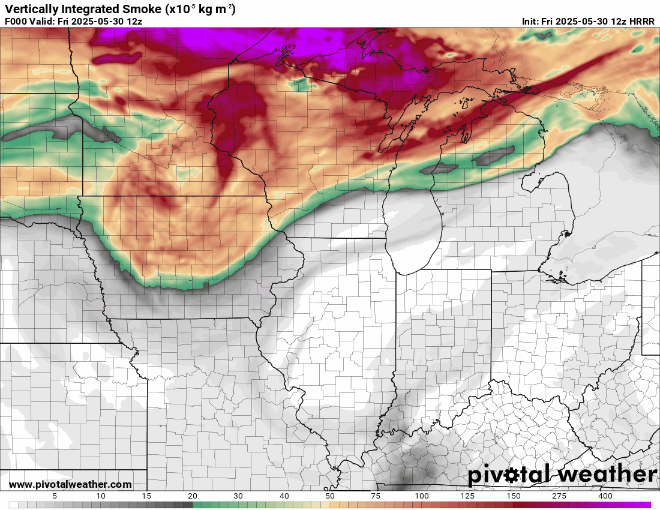If you’ve noticed a hazy, milky sky over Iowa today, you’re not alone. Smoke from massive wildfires in Canada is drifting southward, blanketing much of the Midwest—including Iowa—with a visible haze that will persist through the weekend.
What’s Causing the Haze?
Canada is experiencing an intense early wildfire season, particularly in Manitoba and Saskatchewan. As of May 30, nearly 160 wildfires are burning across the country, with over half classified as “out of control.” Manitoba alone has seen more than 491,000 acres scorched this year—triple its recent annual average. The largest fires, including the Bird River and Border blazes, have forced over 17,000 people to evacuate and prompted states of emergency in both provinces.
The smoke from these fires is being carried by persistent northerly winds, funneling it directly into the Upper Midwest. This weather pattern is expected to continue through the weekend, keeping skies hazy across Iowa and neighboring states.

What to Expect in Iowa
The smoke will be most noticeable in eastern Iowa today, spreading across the state by Saturday. While much of the smoke remains in the upper atmosphere, some of it may descend to ground level, potentially affecting air quality. The Air Quality Index (AQI) is forecasted to reach the “Moderate” range across much of Iowa on Saturday.
Residents may observe:
- Hazy, milky skies during the day
- Vibrant orange and red hues at sunrise and sunset
- A faint smell of smoke, especially during the evening
These conditions are expected to persist through Sunday, with a potential shift in wind patterns early next week that could bring relief.
Health Considerations
Even when smoke is primarily aloft, fine particulate matter (PM2.5) can infiltrate to ground level, posing health risks. Individuals with respiratory or cardiovascular conditions, children, and the elderly are particularly vulnerable. Symptoms can include coughing, throat irritation, and difficulty breathing.
To minimize exposure:
- Limit prolonged outdoor activities, especially if you belong to a sensitive group
- Keep windows and doors closed
- Use air purifiers indoors if available
- Consider wearing N95 masks when outdoors
For real-time air quality updates, visit AirNow.gov.